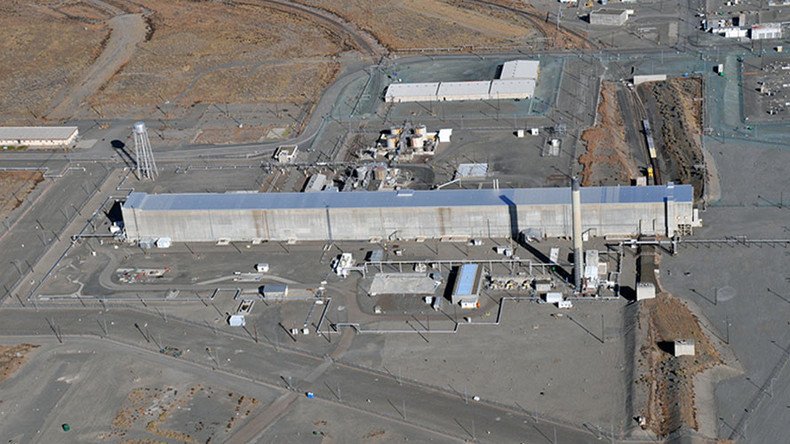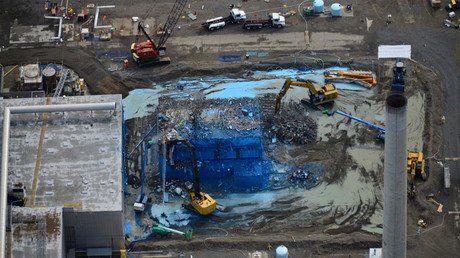More radiation accidents ‘likely’ if Hanford funding cut – Energy Dept official

The aging infrastructure at the largest US nuclear waste site at Hanford, Washington is breaking down, making incidents involving the release of radiation more likely, according to the senior Energy Department official at the site.
The Hanford site, located along the Columbia River near Richland, Washington, stores nuclear waste dating back to the early days of the US atomic program. Workers at the site have been repeatedly exposed to toxic fumes and “burps” of radiation, with crumbling structures posing a continued risk of radioactive release.
The official deadline for cleanup at the site is 2060. Doug Shoop, who runs the Energy Department operations office at Hanford, told AP this week that some of the structures at Hanford could collapse before then.
Workers are in the final stages of completing two components of the cleanup of Hanford’s 618-10 burial ground. https://t.co/jeXKSV6Ml7pic.twitter.com/KlqciOS4vl
— Hanford Site (@HanfordSite) June 15, 2017
“The infrastructure is not going to last long enough for the cleanup,” Shoop said in an interview. “It will be another 50 years before it is all demolished.”
The site’s annual cleanup budget is $2.3 billion, but Shoop says that fully decontaminating the 580-square mile (1,502 square kilometer) site will cost at least $100 billion. President Donald Trump’s proposed 2018 budget cuts Hanford’s funding by $120 million.
Workers are removing waste from the 324 building’s airlock to support the eventual removal of contaminated soil https://t.co/7hkhZyROcspic.twitter.com/QoDJfDpWee
— Hanford Site (@HanfordSite) June 13, 2017
Shoop’s comments come after two incidents, a month apart, that involved collapsing infrastructure at the site. On June 8, demolition work at a 1940s-era plutonium extraction plant caused a release of radiation, but the levels were declared low enough to be safe.
The plant processed 24,000 tons of irradiated uranium fuel rods to remove plutonium for nuclear weapons during the Cold War. It hasn’t been operational since 1967.
Hundreds of workers were evacuated and portions of the site were placed on lockdown after the roof of a 1950s rail tunnel storing radioactive waste and contaminated rail cars collapsed on May 9, opening a 20-foot-wide sinkhole.
The 360-foot (110-meter) long tunnel held eight railroad cars that transported waste in the 1950s, and were buried there until they can be decontaminated. The dirt that fell into the gunnel prevented the release of radiation into the air, officials said. Workers have since filled in the sinkhole and covered the tunnel with tarpaulins.
“There are a whole bunch of things analogous to the tunnels,” Shoop said.
Hanford has 177 underground tanks made of steel, which contain more that 54 million gallons (204 million liters) of radioactive and chemical waste. In April 2016, some 20 workers at the site workers requested medical evaluations on because of potential exposure to chemical vapors and toxic fumes.
“We are sending people into environments no one was expected to go to,” Shoop said. “Is there the potential for more alarms? Absolutely.”
Built during World War II as part of the Manhattan Project to develop the nuclear bomb, Hanford still contains roughly 53 million gallons – over 2,600 rail cars – worth of high-level nuclear waste, left from the production of plutonium for the US nuclear weapons program.













